There are several different types of aerial chemical application equipment. The equipment type chosen to complete a job will depend on the following:
- Location of application
- The target application or pest
- Vicinity to sensitive areas
Spray Systems
The spray system is an integral part of any agricultural RPA. However, modern RPA design trends utilise a modular system that can be easily swapped out for other units, such as granular spreaders.
Spray systems comprise three key components:
- Pesticide Tank
- Pump System
- Nozzle System
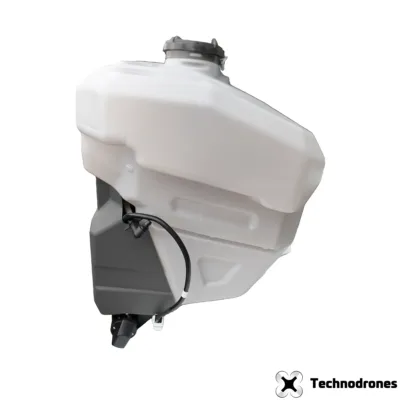 Pesticide Tanks
Pesticide Tanks
Commonly made from high impact moulded plastic, the pesticide tank is designed to be puncture proof and, in some designs, seal itself in the event of a crash.
Depending on the complexity of the RPA design, the pesticide tank may also contain a number of filters and fluid level sensors that pass information back to the operator through the onboard telemetry system and thereby trigger a Return to Launch event once the tank is empty.
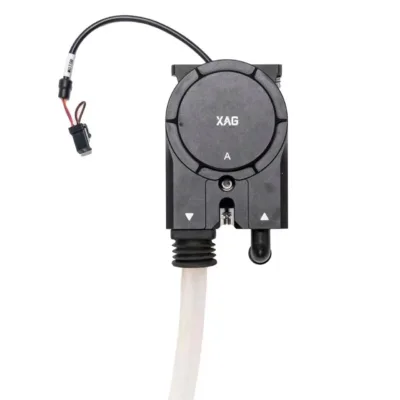 Peristaltic Pump System
Peristaltic Pump System
The peristaltic flow pump system is a cutting-edge agricultural RPA spray pump designed for flow efficiency, precision, and high-volume spraying tasks.
A stepper-motor controlled rotary roller pushes fluid through tubing inside the pump giving very precise control over flow rate. This design also ensures no chemical ever comes into contact with the internal components of the pump, making cleaning and maintenance a simple task.
This system allows for adjustable droplet sizes ranging from 50 to 500 microns, ensuring efficient and accurate application across various agricultural needs.
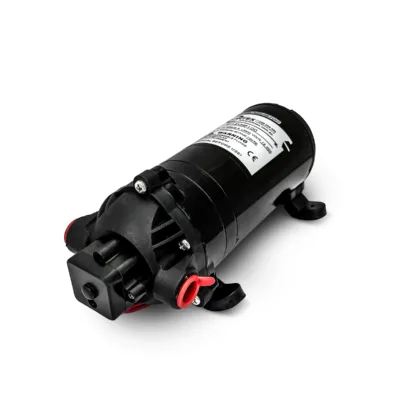 Pressure Pump System
Pressure Pump System
The pressure pump system is a more conventional design type, known for its ability to handle high-pressures and precision in fluid transfer.
Centrifugal pumps use a rotating impeller to impart kinetic energy to the fluid, converting this energy into pressure as the fluid exits the pump.
This type of pump is commonly used for low viscosity fluids and applications requiring high flow rates to the nozzle system.
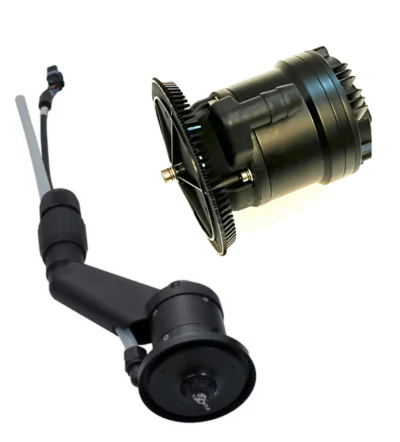 CDA Nozzle System
CDA Nozzle System
The Controlled Droplet Application (CDA) nozzle system works by pumping fluid directly into a spinning disk, which “throws” the fluid out using centrifugal force. Vanes or blades on the edge of the disk atomise the fluid as it is distributed and by adjusting the speed of the disk and flow of fluid precise application rates can be achieved.
These rotary atomising nozzles enhance spray uniformity and reduce drift, which is crucial for effective and precise applications.
When combined with a peristaltic pump system these nozzles offer excellent contamination-free fluid transfer with reduced chance of blockage and restricted flow.
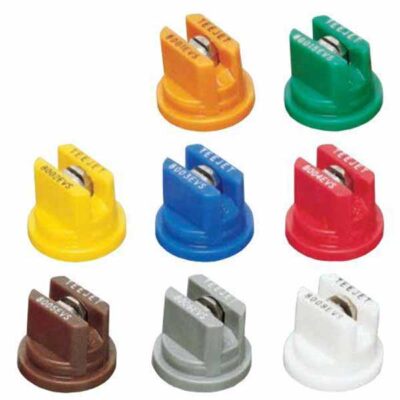 Tee-Jet Nozzle System
Tee-Jet Nozzle System
The Tee-Jet style nozzle system has been the preferred nozzle system in agricultural application for many years. It is a sophisticated and versatile solution for many different spray systems using highly engineered nozzles, proven to produce a variety of spray patterns and droplet sizes.
Being excellent value for money and easy to implement, they were popular in the early stages of agricultural drone design. However, accurate fluid control and pressure is required to achieve the desired application rates and these nozzles can be subject to blockages, meaning rigorous maintenance and cleaning schedules should be observed.
Spreader Systems
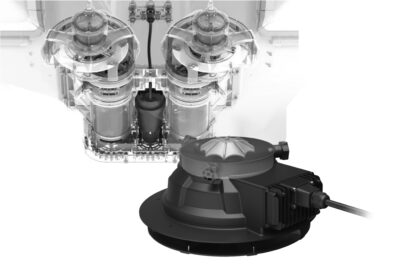 Granulated spreader systems are essential for various agricultural and maintenance tasks, offering precise and efficient distribution of granular materials such as fertilisers, herbicides, pesticides, and insecticides.
Granulated spreader systems are essential for various agricultural and maintenance tasks, offering precise and efficient distribution of granular materials such as fertilisers, herbicides, pesticides, and insecticides.
Engineering designs of spreader systems varies between RPA manufacturers to obtain the desired results. All designs use a gravity fed hopper, similar to a pesticide tank, with a variety of distribution mechanisms attached to the tank outflow:
- Rotary centrifugal disk systems
- Screw type auger systems
- Precision jet seeder systems
Aircraft Spray System Configurations
Spray system configurations for Remotely Piloted Aircraft types vary depending on the specific requirements of the application, such as agricultural spraying, pest control, or granular spreading. Below we will take a look at some of the common configurations and their key components.
Fixed Wing RPA
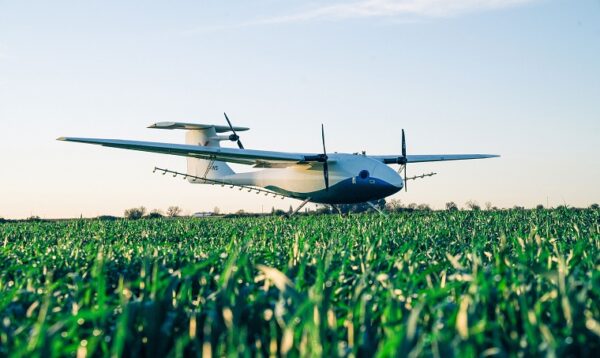 Fixed wing aircraft are best suited to large area fluid applications, where their speed and size can cover wide areas efficiently. Their spray system typically includes:
Fixed wing aircraft are best suited to large area fluid applications, where their speed and size can cover wide areas efficiently. Their spray system typically includes:
Tank & Pump System – A central tank within the fuselage holds the liquid, with a pressure pump used to provides constant high-pressure flow to the extended booms.
Booms & Nozzles – Fixed wing RPA usually have longer booms with multiple nozzles for a wide, evenly distributed swath. Booms are normally mounted within or underneath the wings around the centre of gravity for aerodynamic reasons.
Flow Control – Advanced flow control systems are in place to ensure consistent pressure and spray rate at varying speeds and altitudes. This is especially important in fixed wing systems as both speed and release height tend to be much higher than rotary wing systems.
Rotary Wing RPA
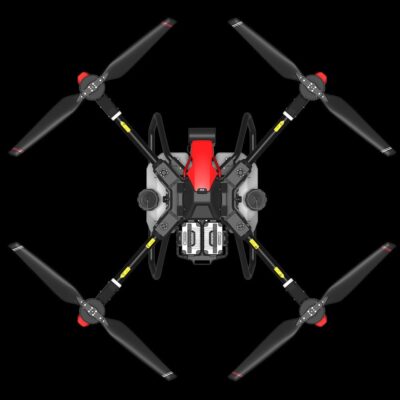 Rotary wing aircraft, including helicopters and multirotors, are more versatile in terms of manoeuvrability and are ideal for smaller, targeted applications.
Rotary wing aircraft, including helicopters and multirotors, are more versatile in terms of manoeuvrability and are ideal for smaller, targeted applications.
Tank & Pump System – Like fixed wing RPA, rotary wing RPA have a central tank, either built into the aircraft frame or suspended beneath the body between the undercarriage. The tanks are often smaller due to the RPA’s size and payload capacity although modern units are capable of carrying 50 litres or more.
Booms & Nozzles – Rotary wing RPA typically have shortened booms with fewer nozzles compared to fixed wing RPA. Commonly nozzles are mounted on the ends of the aircraft arms, directly beneath the motors so that the downward force of air from the propellers can be used to minimise spray drift and increase efficiency. Nozzles can be adjusted to change spray pattern, droplet size, and coverage.
Precision Application – Rotary wing RPA can hover and manoeuvre around obstacles, making them suitable for precision applications from open broadacre areas to much more complex terrain such as steep slopes, orchards, and forestry.
Dedicated Agricultural Drones
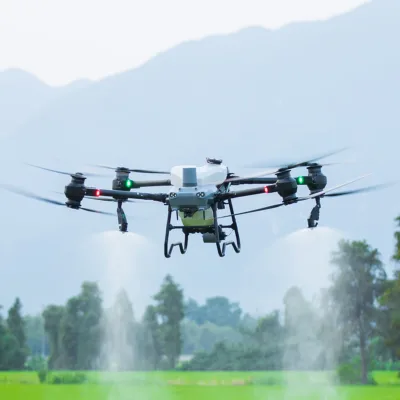 When rotary wing agricultural drones first entered the market, they were little more than heavy lift drones with a rudimentary spray system attached to the undercarriage. Now we are seeing specialist manufacturers producing drones that are specifically designed for agricultural purposes. These drones have specialised spray and spreading systems as well as advanced control software, onboard sensors, and robust waterproof construction.
When rotary wing agricultural drones first entered the market, they were little more than heavy lift drones with a rudimentary spray system attached to the undercarriage. Now we are seeing specialist manufacturers producing drones that are specifically designed for agricultural purposes. These drones have specialised spray and spreading systems as well as advanced control software, onboard sensors, and robust waterproof construction.
Large Capacity Tanks – Modern agricultural drones often have large tanks, ranging from 10 to 60 litres, to minimise refill times and maximise coverage.
Precision Nozzles & Pumps – Multiple CDA nozzle systems, that can be individually controlled for precision application, are coupled with high-flow peristaltic pumps, ensuring even distribution and minimal waste.
Smart Controls – Built in AI, integrated with high precision positioning systems means these drones can not only follow pre-programmed flight paths, but can also make adjustments to their flight path and spray patterns based on real-time data. This ensures both uniform coverage and efficient operation to maximise the amount of hectares that can be treated in a day.
Conclusion
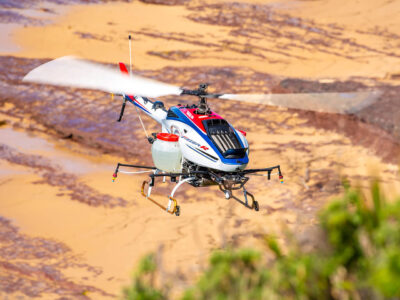 When selecting an agricultural RPA platform there are a number of considerations to be made depending on where, and how you intend to operate. There are a myriad of different case-uses for agricultural drones and not all systems are appropriate for every use.
When selecting an agricultural RPA platform there are a number of considerations to be made depending on where, and how you intend to operate. There are a myriad of different case-uses for agricultural drones and not all systems are appropriate for every use.
Some of the key considerations to be made when selecting a platform:
Payload Capacity
The payload capacity of the aircraft determines the size of the spray tank and therefore the amount of fluid it can carry. Keeping spray equipment such as tanks and pumps as lightweight as possible can maximise the amount of product that can be carried.
The current trend is towards larger spray tanks and broadacre applications however, a larger tank and aircraft may not be ideal for high precision spot-spraying tasks in tight, high-risk areas such as dam walls or wooded areas.
Spray Width
The swath produced by the aircraft determines coverage efficiency, however this needs to be achievable at the required droplet size to reduce spray drift. Fixed wing RPA will provide the greatest spray width although with comparably lower precision to rotary wing aircraft. Wider spray patterns are better for open fields, while narrower patterns are better for targeted applications. The ability in some RPA to turn off nozzles in flight allows for better spot-spraying performance.
Control Systems
Advanced agricultural RPA come with RTK GPS and highly automated flight control systems for precise navigation and uniform application. The addition of collision avoidance and terrain following sensors can make operation safer and more efficient.
Consider what control and safety features you need when selecting a platform. Larger aircraft with advanced automation may be better for broadacre applications, but a smaller and more nimble machine may be safer in a tight space.
Safety & Regulations
Compliance with local regulations and safety standards is crucial for the operation of agricultural RPA. Prospective operators should make sure they understand all the requirements, not only for operation of larger drones, but also the discharging of chemicals from an aircraft.
A good understanding of spray technique, spray drift management, and environmental conditions is an essential part of being an agricultural drone operator.
Let’s Get Started
Don’t trust your future to anyone else. FPV Australia have you covered. Contact us NOW!

